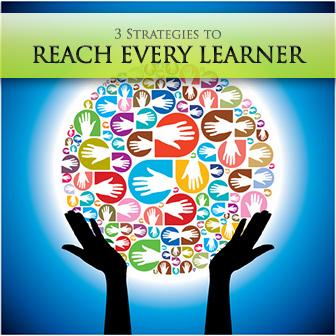Positively Wonderful: Top 5 Classroom Management Strategies that Really Work


Explore these 3 strategies to reach and inspire each and every learner in your encounter.

Every student has his or her strengths when it comes to learning English. Some students are effective listeners, but have trouble speaking or articulating grammar. Many students are expert grammarians, but have no way to practically apply their knowledge. Use their strengths and even their weaknesses to your advantage. You should be developing the four skills of reading, writing, speaking and listening to some degree in every lesson. Assess students' abilities and recognize intimately what their weaknesses and strengths are. Recognizing these attributes will help you reach your students in many ways. If you are aware, you can showcase their talents, provide perimeters for what each student needs to work on, display often where they are excelling, and how they can better blend skills. Students themselves provide you with all the information you need to tailor your lessons, subject matter, and activities to students' needs. Challenge them to focus on improving trouble areas, and build confidence by reinforcing those areas where they are excelling.
Creating project-based assignments that appeal to the individuals in your class will develop skills while furnishing confidence and independence. Determine what project would best suit your class, then provide methodic delivery and build-up of the topics students will need to be successful. This will appeal to each student because you can give them time to brainstorm ideas, develop a plan, and devise a timeline for each milestone of the project. Students will respond by pouring themselves into their projects, injecting their personality and approaching projects with enthusiasm. Projects produce individual, self-paced learning with an accent on sharing knowledge, and honing all the skills it takes to deliver language.
It is imperative to always provide extensive clarity for ESL learners. Spell out clear explanations before each and every exercise, and also make it a habit to tell students why they will like the activity or why it is important for their learning process. This will decrease the time you spend re-stating scattered directions or answering lots of questions once they get going. It seems simple, but all students appreciate these efforts and respond by actively participating. Your students will work better in groups, get more excited when a task is presented to them, and they will work together to share their outcomes in the debrief. By doing these simple things in every lesson, you are consistently punctuating the positive.
Intersperse lessons with interesting dialogues, entrancing games, competitive assignments, and anything else that you think will go over really well for any given class. All lessons should have a mix of the practical combined with the entertaining. It is a fact that if learners have fun doing it, they will retain the information and build upon what they know in a more rapid fashion.
One way to ensure that your lessons are not getting entrenched in the mundane or too focused on routine, is to vary how you present material. It can be as simple as changing around the order of your day, and you might possibly want to turn things upside down and entertain students with an opposites day. This is especially appropriate for driving home what opposites are and giving them the lead. You can start the day by telling them everything should be the opposite of what it normally is, and take suggestions for how to go through the rest of the class. It is humorous to see what ideas they generate, and you can help them along at the start. Perhaps the students who are most talkative must be quiet, and those students who usually take the back seat, now turn into leaders. They might challenge you with something like, teacher always spends twenty minutes on grammar. This is switched by having the students provide a down and dirty grammar lesson. Put them in groups and let them devise a fun way to do some grammar review of topics of their choice. This opens up a whole can of worms, and of course you want to let them have fun and take the lead, but don't lose control.
Another way to vary things up from the usual day is to allow students to teach a portion of a class. You can set it up in many different ways, but generally pairs work really well here. Giving them the freedom to choose how and what they will present in a given time-frame can be very exciting for them. It doesn't have to be grammar. They could explain a game, correct the homework, or approach a common mistake and how to fix it. Grant them flexibility and work with them to create an activity that is all their own. You will be there to support and guide them, and jump in if the class gets confused or too hyper. This type of activity should be done once students are comfortable in the class and the group dynamics are at a high point. Doing this during the first week when most students are still testing the waters would most likely be unsuccessful. Devise your own ways to turn lessons on their side, and offer students the lead. Your students are full of surprises so let them reign for a day!
Give them the forum and the determination they deserve by trying out these 3 fail-safe strategies for reaching all of your learners.